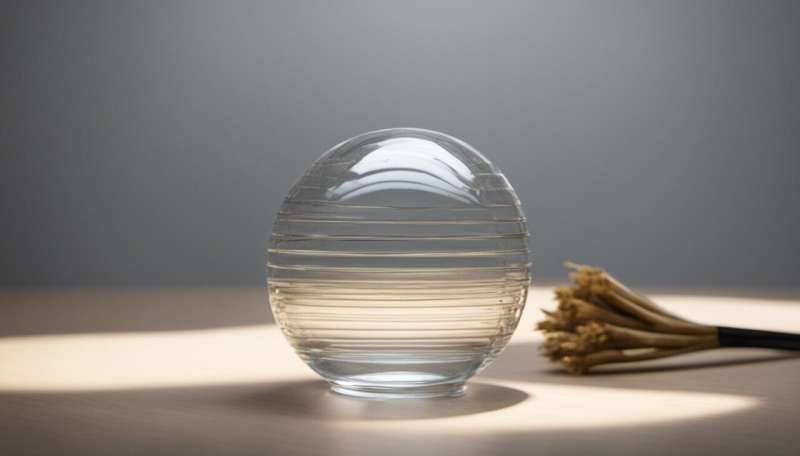Researcher pulling from past to shape future of glass research

Glass has been a part of society for thousands of years, so it is easy for this material to become invisible and overlooked, but a Penn State materials scientist has laid out a plan to map the glass genome and advance the future of glass.
The effort is part of the Materials Genome Initiative, which is trying to double the speed of developing new materials.
John Mauro, professor of materials science and engineering at Penn State, is building a set of predictive modeling tools combining knowledge from glass physics and chemistry, to map the building blocks and properties of glass, much like efforts to understand the human genome. His team is already building a strong foundation for understanding glass composition, structure and property relationships in industrially relevant systems. He reports his results in a recent issue of Current Opinion in Solid State and Materials Science.
"The idea of decoding the glass genome is that we embrace all of these different modeling approaches, from basic physics through empirical modeling and machine learning," Mauro said. "By combining all of these tools together, we can obtain the best models for all the glass properties we care about. Then we can use this new knowledge to improve current compositions, as well as enter new composition spaces."
One area Mauro wants to strengthen is collaboration between the glass chemistry and glass physics communities. He has made a career out of combining these two areas and said the interplay between chemistry and physics will be key to better understanding glass.
The concept of machine-based learning models to advance materials research, where advanced computers analyze seemingly countless variables and combinations to search for new properties and uses, has been around for many years. But it recently has become a driving force due to ever-expanding computing power.
Mauro said inventors traditionally look to tailor glass to meet specific properties. For example, Corning's Gorilla Glass, which Mauro helped design, added strength to a thin layer of transparent glass. However, the genome approach will allow inventors to think differently because it will highlight the myriad of potential properties available through glass formulations. Glass compositions then can be engineered into unique materials to meet stringent demands for future applications.
"That's very different from just trying to design a glass that needs only one specific set of properties, because often these target properties will change," Mauro said. "With the genome approach, no matter how the target changes, you're able to come up with something to meet those requirements."
Ticking off a list of areas where glass is still cutting edge—energy generation and storage, more efficient buildings, biomedical components, nanomedical drug delivery and communication, and information display technology—it's easy to see the importance of understanding all potential properties of glass.
"Some people have a notion of glass being an old-fashioned material because it has been used for thousands of years," Mauro said. "For example, we take glass windows for granted, yet there is a lot of advanced chemistry, physics and engineering technology that goes into the manufacture of common window glass. If we want to develop the next generation of glass products, we need to develop a really deep understanding of glass."
Provided by Pennsylvania State University



















